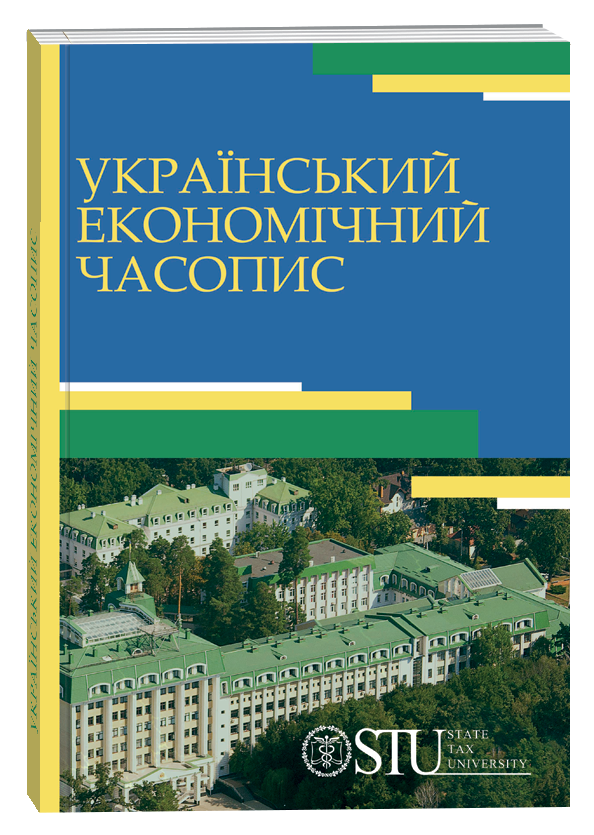PECULIARITIES OF AUTOMATING TRANSFER PRICING PROCESSES IN MNES AND TAX AUTHORITIES
DOI:
https://doi.org/10.32782/2786-8273/2025-8-1Keywords:
transfer pricing, accounting automation, MNE, TP automationAbstract
Introduction. Interdisciplinary research is a promising approach for studying transfer pricing (TP) and other economic topics. Combining economics, mathematics, computer science, game theory, and other sciences helps address complex challenges. This integration enhances practical implementation by involving diverse stakeholders and expanding research topics. This article explores TP process automation, focusing on applications of information technology in tax authorities and multinational enterprises (MNEs). It identifies tasks solvable through automation, analyzes its advantages and challenges, and highlights key differences in approaches to automation in tax authorities and MNEs. Purpose. The purpose of the article is to analyze modern approaches to the automation of transfer pricing processes in transnational corporations and tax authorities, study the specifics of their implementation, and establish a list of tasks that can be solved in the TP using automation. Methods. General scientific methods were employed, including analysis to study algorithms for integrated accounting systems, deduction to identify goals or set automation tasks for TP, and synthesis to develop a scheme of advantages and challenges for stakeholders. Additionally, a table was created to evaluate factors influencing automation planning for tax authorities and MNEs. Results. Differences and common trends in automation processes in tax authorities and MNEs were established. Conclusions. The application of automation of accounting processes in MNEs requires a comprehensive approach. At the early stage of building a company's management system, there is a need to use the entire toolkit of integrated accounting, where each module, in addition to performing standard functions of accumulation, analysis and use of information for general economic needs, will also be used for the purposes of the TP. In tax authorities, automation can also be carried out comprehensively, but given the lack of sufficient resources, it is advisable to develop separate solutions for certain processes of control of the shopping center as an add-on to already implemented automation projects.
References
Бардаш С.В., Костенко О.М., Краєвський В.М. Економічна синталітика: філософський дискурс становлення та розвитку: монографія. Київ : ЦП Компринт, 2017. 225 с.
Бутинець Ф.Ф., Драбаніч А.В. Інтегрований облік як засіб управління підприємством. Бухгалтерський облік, аналіз та аудит: проблеми теорії, методології, організації. Збірник наукових праць. 2016. № 2 (17). С. 12–24.
Голов С.Ф. Міжнародні стандарти фінансової звітності: вдосконалення та застосування. Бухгалтерський облік і аудит. 2007. № 11. С. 43–58.
Joseph Kuba Nembe and oth. The Role of Artificial Intelligence in Enhancing Tax Compliance and Financial Regulation. Financial Accounting Research Journal. 2024. № 6 (2). Pp. 241–251. DOI: https://doi.org/10.51594/farj.v6i2.822
Камінська Т.Г., Краєвський В.М., Костенко О.М., Охріменко І.В., Савчук В.К. Інформаційна система управління сільськогосподарським підприємством: аналітичні індикатори формування і результативності. Київ : Вік принт, 2016. 270 с.
Краєвський В.М., Муравський О.Ю. Обліково-податкова природа трансфертного ціноутворення. Міжнародний науковий журнал «Інтернаука». Серія: «Економічні науки». 2023. № 5. URL: https://www.inter-nauka.com/issues/economic2023/5/8906
Краєвський В.М., Муравський О.Ю. Ризикоорієнтований підхід в системі податкового контролю за трансфертним ціноутворенням. Український економічний часопис. 2023. № 1. С. 23–28. DOI: https://doi.org/10.32782/2786-8273/2023-1-4
Куцик П.О. Розвиток методології інтегрованого обліку в умовах застосування корпоративних інформаційних систем. Вісник ЖДТУ. Економіка, управління та адміністрування. 2010. № 3 (53). С. 140–142.
Tanja Mayer. Artificial Intelligence and Transfer Pricing: Opportunities for Tax Authorities and Multinational Enterprises (MNEs). Advances in Computer Sciences. 2023. № 6 (1).
Максімова В., Артюх О. Функціональна інтеграція облікових систем на цільовій основі. Економічний аналіз. 2008. № 3 (19). С. 299.
Нападовська Л.В. Управлінський облік: суть, значення та рекомендації щодо його використання в практичній діяльності вітчизняних підприємств. Бухгалтерський облік і аудит. 2005. № 8–9. С. 50–62.
Poyda-Nosyk N., Borkovska V., Bacho R., Loskorikh G., Hanusych V., Cherkes R. The role of digitalization of transfer pricing in the company’s management accounting system. International Journal of Applied Economics, Finance and Accounting International Journal of Academic and Economic Finance Applications. 2023. № 17 (1). P. 176–185. DOI: https://doi.org/10.33094/ijaefa.v17i1.1096
Пушкар М.С. Тенденції та закономірності розвитку бухгалтерського обліку в Україні (теоретико-методологічні аспекти): монографія. Тернопіль : Економічна думка, 1999. 424 с.
Савчук В.К., Костенко О.М., Краєвський В.М. Інформаційно-аналітичний процес: праксеологічний підхід: монографія. Київ : Вік принт, 2013. 204 с.
Сторожук Т., Моргуненко А. Методологічні аспекти трансфертного ціноутворення в контексті формування облікової політики МГК. Український економічний часопис. 2024. № 7. С. 117–124.
Сторожук Т., Моргуненко А. Використання блокчейну та штучної нейронної мережі при автоматизації контролю в сфері трансфертного ціноутворення. Herald of Khmelnytskyi National University. Economic Sciences. 2024. № 328 (2). С. 344–350.
Mahmoud Khalil. The Role of AI in Enhancing Transfer Pricing Accuracy and Efficiency. Advances in Computer Sciences. 2024. № 7 (1).
Bardash S. V., Kostenko O. M., Kraievskyi V. M. (2017). Ekonomichna syntalityka: filosofskyi dyskurs stanovlennia ta rozvytku: monohrafiia [Economic Synanalytics: Philosophical Discourse of Formation and Development: monograph]. Kyiv: TsP «Komprint».
Butynets F. F., Drabanich A. V. (2016). Intehrovanyi oblik yak zasib upravlinnia pidpryiemstvom [Integrated accounting as a means of enterprise management]. Bukhhalterskyi oblik, analiz ta audyt: problemy teorii, metodolohii, orhanizatsii. Zbirnyk naukovykh prats, vol. 2 (17), pp. 12–24.
Holov S. F. (2007). Mizhnarodni standarty finansovoi zvitnosti: vdoskonalennia ta zastosuvannia [International financial reporting standards: improvement and application]. Bukhhalterskyi oblik i audit, vol. 11, pp. 43–58.
Joseph Kuba Nembe and oth. (2024). The Role of Artificial Intelligence in Enhancing Tax Compliance and Financial Regulation. Financial Accounting Research Journal, vol. 6 (2), pp. 241–251. DOI: https://doi.org/10.51594/farj.v6i2.822
Kaminska T. H., Kraievskyi V. M., Kostenko O. M., Okhrimenko I. V., Savchuk V. K. (2016). Informatsiina systema upravlinnia silskohospodarskym pidpryiemstvom: analitychni indykatory formuvannia i rezultatyvnosti [Agricultural enterprise management information system: analytical indicators of formation and effectiveness]. Kyiv: Vik Prynt.
Kraievskyi V. M., Muravskyi O. Yu. (2023). Oblikovo-podatkova pryroda transfernoho tsinoutvorennia [Accounting and Tax Content of Transfer Pricing]. Mizhnarodnyi naukovyi zhurnal «Internauka». Seriia: «Ekonomichni nauky», vol. 5. Available at: https://www.inter-nauka.com/issues/economic2023/5/8906
Kraievskyi V. M., Muravskyi O. Yu. (2023). Ryzykooriientovanyi pidkhid v systemi podatkovoho kontroliu za transfernym tsinoutvorenniam [Risk-Oriented Approach in the System of Tax Control for Transfer Pricing]. Ukrainskyi ekonomichnyi chasopys, vol. 1, pp. 23–28. DOI: https://doi.org/10.32782/2786-8273/2023-1-4
Kutsyk P. O. (2010). Rozvytok metodolohii intehrovanoho obliku v umovakh zastosuvannia korporatyvnykh informatsiinykh system [Development of the methodology of integrated accounting in the conditions of application of corporate information systems]. Visnyk ZhDTU. Ekonomika, upravlinnia ta administruvannia, vol. 3 (53), pp. 140–142.
Tanja Mayer (2023). Artificial Intelligence and Transfer Pricing: Opportunities for Tax Authorities and Multinational Enterprises (MNEs). Advances in Computer Sciences. no. 6 (1).
Maksimova V., Artiukh O. (2008). Funktsionalna intehratsiia oblikovykh system na tsilovii osnovi. Ekonomichnyi analiz, vol. 3 (19), p. 299.
Napadovska L. V. (2005). Upravlinskyi oblik: sut, znachennia ta rekomendatsii shchodo yoho vykorystannia v praktychnii diialnosti vitchyznianykh pidpryiemstv. Bukhhalterskyi oblik i audit, vol. 8–9, pp. 50–62.
Poyda-Nosyk N., Borkovska V., Bacho R., Loskorikh G., Hanusych V., Cherkes R. (2023). The role of digitalization of transfer pricing in the company’s management accounting system. International Journal of Applied Economics, Finance and Accounting International Journal of Academic and Economic Finance Applications, vol. 17 (1), pp. 176–185. DOI: https://doi.org/10.33094/ijaefa.v17i1.1096
Pushkar M. S. (1999). Tendentsii ta zakonimirnosti rozvytku bukhhalterskoho obliku v Ukraini (teoretyko-metodolohichni aspekty): monohrafiia [Trends and patterns of accounting development in Ukraine (theoretical and methodological aspects: monograph]. Ternopil: Ekonomichna dumka.
Savchuk V. K., Kostenko O. M., Kraievskyi V. M. (2013). Informatsiino-analitychnyi protses: prakseolohichnyi pidkhid: monohrafiia [Information and analytical process: praxeological approach: monograph]. Kyiv: Vik Prynt.
Storozhuk T., Morhunenko A. (2024). Metodolohichni aspekty transferthnoho tsinoutvorennia v konteksti formuvannia oblikovoi polityky MGK [Methodological Aspects of Transfer Pricing in the Context of Forming the Accounting Policy of MGC]. Ukrainskyi ekonomichnyi chasopys, no. (7), pp. 117–124.
Storozhuk T., Morhunenko A. (2024). Vykorystannia blokcheinu ta shtuchnoi neironnoi merezhi pry avtomatyzatsii kontroliu v sferi transferthnoho tsinoutvorennia [The Use of Blockchain and Artificial Neural Networks in the Automation of Control in the Field of Transfer Pricing]. Herald of Khmelnytskyi National University. Economic Sciences, 328(2), 344–350.
Mahmoud Khalil (2024). The Role of AI in Enhancing Transfer Pricing Accuracy and Efficiency. Advances in Computer Sciences. no. 7 (1).



